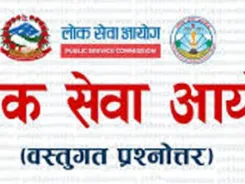What is Constitutionalism?
Constitutionalism is the idea that the power of the government is derived from and constrained by a constitution, which guarantees the protection of fundamental rights, the rule of law, and the separation of powers. It highlights that the law applies to all people and organizations, including the government.
.
.
.
Important Elements of Constitutionalism:
- Supremacy of the Constitution –
The constitution is supreme and must guide all state actions. - Rule of Law –
The law governs and holds all people and organizations accountable. - Separation of Powers-
To guard against misuse, the executive, legislative, and judicial branches of government have different authority. - Fundamental Rights –
Provides citizens with human rights and civil liberties. - Independent Judiciary –
Provides checks and balances on other branches of government. - Transparency & Accountability –
Government actions must be transparent to be observed by the public. - Democracy & Periodic Elections –
Ensures public participation in the government.
You May Also like these categories :
Bagamati Province Banking Banking Computer Computer Fundamental Computer Operator Computer Operator Corporation Corporation First Paper Gandaki Province General Knowledge HTML IT Skill Test Kharidar Kharidar Koshi Province LokSewa MCQ Model Questions Na. Su. Nayab Subba Notice Officer Old Questions Province Province Questions Quiz Result Second Paper Section Officer Security Agency Sudurpaschhim Province Syllabus Vacancy Videos
History of Constitutional Development of Nepal
A grand Constitutional transformation took place in Nepal, which reflects its political transformation from an absolute monarchy to a federal democratic republic.
- Government of Nepal Act, 1948
=>The first constitution written by the Rana regime.
=>The regime brought limited reforms but still maintained autocratic rule.
=>It was toppled in 1951 following the anti-Rana revolution. - Interim Constitution of 1951
=>The constitution was brought in after the anti-Rana revolution.
=>Transitional document to lead the nation to democracy.
=>A constitutional monarchy was established. - Constitution of Nepal, 1959
=>King Mahendra’s first democratic constitution in Nepal.
=>Institutionalized parliamentary system.
=>Suspended in 1960 when the king dissolved parliament and established the Panchayat System. - Constitution of Nepal, 1962
=>Established partyless Panchayat system on basis of absolute monarchy.
=>Restricted political freedoms, with authority given to the king.
=>Lasted until the 1990 People’s Movement (Jana Andolan I). - Constitution of Nepal, 1990
=>Restored monarchical and multiparty democracy.
=>Established fundamental rights and an independent judiciary.
=>Undermined by political turmoil and the Maoist insurgency (1996-2006). - Interim Constitution, 2007
=>Adopted after the Comprehensive Peace Agreement (2006) ending the civil war.
=>Abolished the monarchy (2008) and fixed Nepal as a federal democratic republic.
=>Set the stage for election of the Constituent Assembly (CA). - Constitution of Nepal, 2015
=>Enacted on September 20, 2015, after several years of discussion.
=>Made Nepal a secular, federal, democratic republic with seven provinces.
=>Contains progressive clauses on social justice, gender equality, and inclusive governance.
=>Faced resistance from Madhesi and Tharu communities over federal boundaries and representation.
Conclusion
The constitutional development of Nepal demonstrates how the nation has battled for democratic principles along with inclusion and stability. The country’s transition from autocratic governance to federal republican status through successive constitutions has shaped Nepal’s political system with the 2015 Constitution standing as the most inclusive framework which continues to progress toward addressing various societal needs.
To know more about this please view this video










